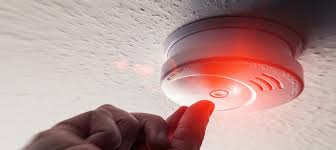New report: AI in Senior Living and Care

Concerns about AI are all around, but its future role is inevitable. There it is, one consumer well-publicized survey after another, whether it is the WSJ, Pew Research or AARP, even as adoption in business, healthcare and other industries grows. Consumers continue to express worry – but in the meantime…82% of companies are either using or exploring use of AI today. That parallels the senior living and care organizations interviewed for this new report – there is a combination of evaluating, limited use, and actually in use with benefit. Interviewees contributed ideas, actual projects and concerns, helping to shape the new report, The Future of AI in Senior Living and Care. Check it out! Here are few predictions about the future from the report:
Staff education will be continuous with chatbots. Chatbots have already been deployed for several years in senior living organizations as a sales interface for prospects. But in the future, as is beginning to happen, their use will be broadened to day-to-day operations, making suggestions or guiding as appropriate. For example, a recently hired staff member can get a short refresher on a task before providing specific care to a resident. Soon a new generation of chatbots powered by Large Language Models (LLMs)s which access internal documentation/articles will be capable of answering staff questions based on those articles.
In-room voice-enabled responses will be personalized and helpful. Some communities, such as ActsLife, have thousands of Amazon’s Alexa devices in every room, as many as 5000 across one large senior living company. In the near future, Amazon has promised an upgrade (not free) for Alexa, powered by Anthropic’s Claude, enabling voice conversations between residents and staff, which could substantially improve the user experience.
AI tools will be used to coordinate multiple aspects of care. Today, the care continuum of older adults is filled with gaps between providers and processes. AI tools, if properly applied, can provide access to multiple structured and unstructured data sources that paint a picture for caregivers, professionals and family, about the care to be provided based on a person’s health status, offering automated check-ins and recommendations for next steps, much the way many web queries today are accompanied by chatbot suggestions.
Prediction will be expected – providing a smoke detector for your health. Instead of requiring users to query patient and resident history looking for indicators, predictive analysis will be refined over time. The result will actually be predictive. Simple suggestions – Mrs. Smith has fallen, perhaps she needs some evaluation and possible physical therapy – will be replaced by correlation between multiple aspects of Mrs. Smith’s life – from weight, diet, exercise, bone density, and notes-based observations from staff and visiting physicians.







